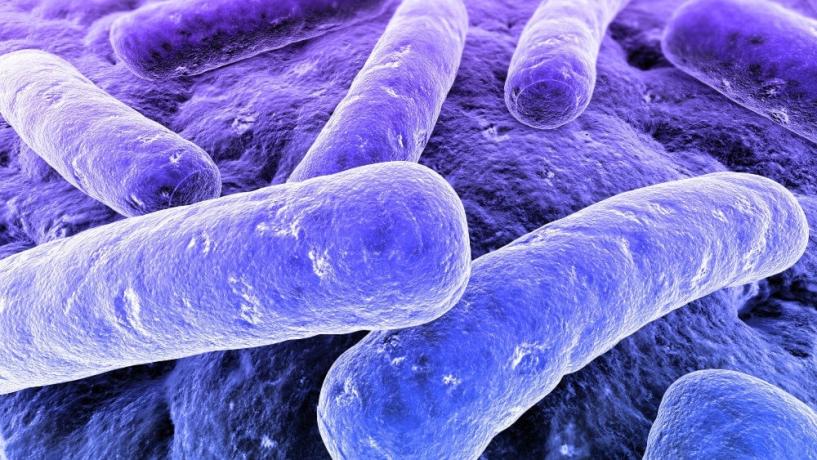
Over 200 different diseases can be spread through food through bacterial, viral or toxic contamination according to the World Health Organisation (WHO). A study commissioned by the Australian state and federal food authorities, titled Food Illness in Australia, estimates that every Australian has an episode of foodborne gastroenteritis on average once every five years and annually there are more than 4.1 million cases of illness linked to food contamination.
Bacterial
Food poisoning that has been caused by bacteria is the most common cause of food poisoning and refers to food that has been contaminated with bacteria. While a person’s immune system is typically equipped to deal with a certain level of food contamination, large amounts can make someone extremely unwell.
Vulnerable people that are more susceptible to illness, such as children, the elderly, pregnant women or people with a lowered immune system, are more likely to not only experience food poisoning but also to be more severely affected.
Food safety is essential for lowering the risk of bacterial food poisoning because the way food is handled, stored and prepared is directly related to the level of bacteria present in food. Food handlers must maintain a clean and sanitary workspace; ensure their hands and equipment are thoroughly washed to avoid cross-contamination between foods; and store, chill and cook foods in and to the correct temperatures.
Some of the most common types of bacteria that cause food poisoning are:
- Salmonella
- Campylobacter
- Listeria monocytogenes
- E. coli
- Clostridium perfringens
- Bacillus cereus
- Staphylococcus aureus
According to the aforementioned study, Salmonella and Campylobacter were found to be the leading causes of hospitalisations; while Salmonella and Listeria Monocytogenes resulted in the most deaths nationwide.
The symptoms of bacterial food poisoning vary depending on the illness and some people will suffer from more severe cases than others. However, some of the more common symptoms are:
- Nausea
- Vomiting
- Abdominal cramps
- Diarrhoea
- Lethargy
- Fever
- Sweating
Keeping hydrated and resting are often the only treatment available for food poisoning as it is up to the body to naturally flush out the contaminants. However, in some case,s antibiotics will be prescribed to assist the body in fighting the infection, particularly in cases of listeria monocytogenes poisoning and when a vulnerable person is affected.
Viral
Unlike bacteria, viruses do not grow and multiply on food. Instead, virus cells are present on food and when consumed, they begin taking over human cells and infecting them. As little as one particle is all it takes to make someone ill.
When referring to viruses that are transmitted through food, some of the most common types of foodborne diseases are:
- Hepatitis A
- Viral gastroenteritis
- Norovirus
- Rotavirus
Norovirus was responsible for causing most of the illnesses related to food contamination, according to the Food Illness in Australia study.
These diseases vary in severity and will typically last for a few days, with the exception of Hepatitis A which can last for a number of weeks. The other three viruses listed produce symptoms similar to gastroenteritis and include:
- Dehydration
- Vomiting
- Abdominal cramps
- Sudden onset of diarrhoea
- Fever
Hepatitis A is a disease that affects the liver and is spread by coming into contact with anything contaminated by an infected person’s faeces. Symptoms of Hepatitis A can include:
- Jaundice – yellow skin and eyes
- Fever
- Nausea
- Abdominal pain
- Dark urine
It is very important that individuals who are suffering from one of these viruses do not handle or prepare food or drink for others as there is an added risk of making others sick.
Toxins
When it comes to toxic contamination of food, a toxin can be defined as ‘a poisonous substance either produced by a living organism or man-made’. Toxins are designed to cause harm to anything that comes into contact with them and in many cases toxins that cause an individual to become ill can have lifelong consequences.
Natural toxins occur as a defence mechanism produced by the food itself. Some examples of this are:
- Death-cap mushrooms
- Red kidney bean toxin
- Shellfish toxins – ciguatera and scombroid poisoning
- Berries varieties
These toxins all have different symptoms and treatments and in some cases can even result in death. It is imperative that before eating anything, you are first aware of whether it is harmful – particularly when travelling to an unknown destination.
Accidental chemical contamination is another reason that food can become toxic and cause someone to become unwell. Pesticides, chemicals which aim to eradicate pests, are a common type of manmade toxins that can contaminate food and cause illness.
When purchasing foods that will likely have been treated with pesticides, for example, lettuces, fruit or vegetables, it is essential that you first carefully wash them.




